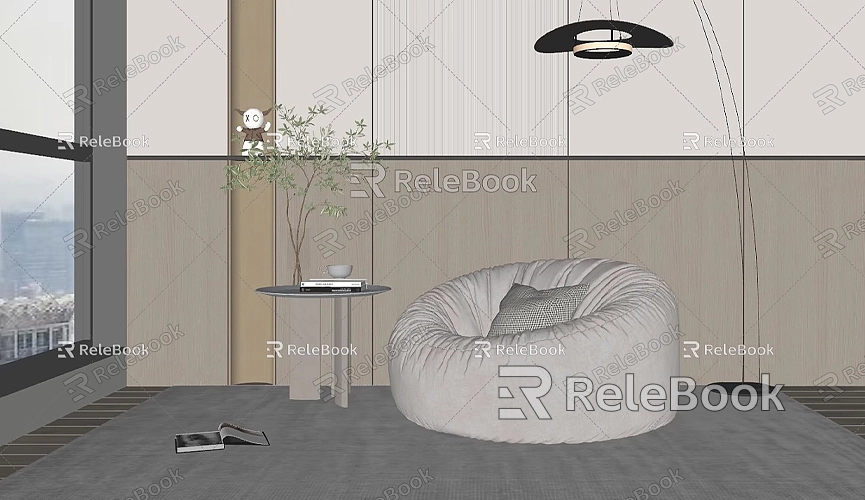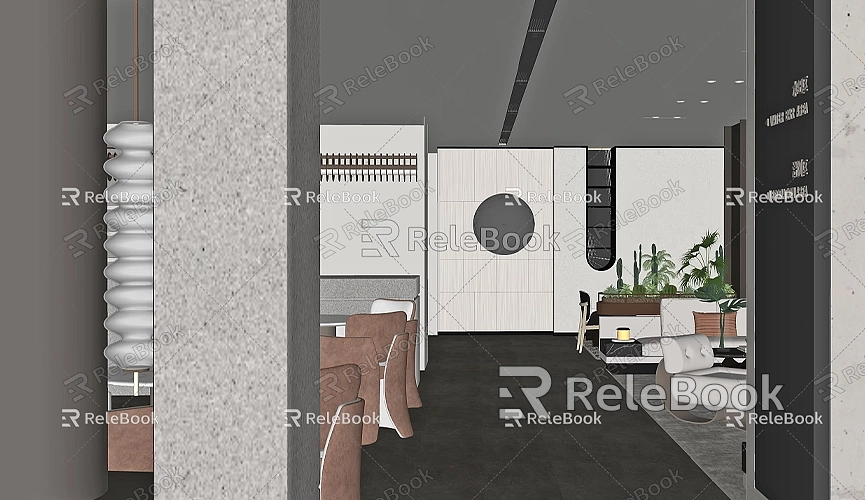How to import sketchup models onto phone
In today’s digital design and development world, 3D modeling has become a fundamental tool across many industries. SketchUp, known for being easy to use and powerful, is widely applied in architectural design, interior design, landscape planning, and more. With the constant improvement of mobile device performance, more and more designers and developers want to bring their SketchUp 3D models to their phones for display, modification, and further optimization. Whether for virtual reality (VR), augmented reality (AR) applications, or simply viewing 3D models, smartphones have become a key platform for viewing and interacting with 3D models. This article will provide a detailed guide on how to import SketchUp models to your phone, covering everything from choosing the right export format and optimizing models to recommending useful apps, helping you take your SketchUp creations to your phone for viewing, editing, and sharing anytime, anywhere.
Why Import SketchUp Models onto Your Phone?
In traditional workflows, viewing SketchUp models is usually done on a computer. While PC platforms offer powerful performance and visual effects, mobile devices are increasingly recognized for their convenience and the ability to use them anytime, anywhere. By importing SketchUp models to your phone, designers can showcase their designs anytime and anywhere, clients can easily view and interact with them, and developers can perform quick debugging and testing on mobile devices. Specifically, the benefits of importing SketchUp models to your phone include:

- Convenient Display: In design and architecture, clients or team members often need to view 3D models. A smartphone, as a portable display tool, allows you to showcase your design effects anytime.
- Augmented Reality Experience: For those who wish to display their designs in the real world through AR applications, importing 3D models to a phone enables users to interact with virtual objects via the phone’s camera, enhancing the display effect.
- Game and App Development: For developers, importing SketchUp models into game engines like Unity and then onto phones allows for game and interactive app development, improving the mobile experience.
- Optimization and Modification: Phones allow not only for viewing 3D models but also for modifying and optimizing them through various mobile apps, making it easier to provide quick feedback and updates.
In short, importing SketchUp models onto your phone not only enhances the convenience of model display but also brings a richer, more interactive experience. Whether for display or development, mobile devices have become an indispensable platform for using 3D models.
Preparation: Optimizing and Adjusting Your SketchUp Model
Before importing your SketchUp model to a phone, it is critical to ensure the model’s quality, optimization, and settings are correctly configured. Without proper optimization, you may encounter performance issues, slow load times, or rendering problems once the model is on the phone. Therefore, optimization and adjustment are the first steps in the model export process.
Simplify the Model
SketchUp models can contain a lot of details and high polygon counts, which may affect loading speed and rendering performance on mobile devices. Therefore, simplifying the model is essential. Remove unnecessary details, reduce polygons, and merge duplicate components. For complex buildings or scenes, reducing the detail of structures and using low-polygon models can significantly improve performance.
Adjust Units and Scale
SketchUp supports various unit settings, such as centimeters and inches, but most mobile apps use meters as the default unit. Before exporting the model, make sure the units in your SketchUp file are compatible with the target platform. If the unit settings are incorrect, the model may display at the wrong scale on the phone. Additionally, adjusting the scale of the model can help prevent any discrepancies in size when imported onto the mobile device.
Texture and Material Handling
If your SketchUp model uses textures or materials, ensure that texture files are correctly mapped and that their sizes are optimized for mobile displays. High-resolution textures can cause performance bottlenecks on phones. Compressing textures and reducing their resolution can improve loading speed and rendering performance. Also, it’s best to package textures along with the model files to ensure the textures display correctly after import.
Proper Naming and Grouping
To ensure smooth model management after import, it’s recommended to organize and name components and groups clearly in SketchUp. This is especially helpful when the model is complex, as clear naming and grouping can prevent confusion after import and make managing the model on the phone easier.
Exporting the SketchUp Model: Choosing the Right Format

SketchUp supports several export formats, including OBJ, FBX, and STL, and different mobile apps or engines support different file formats. To ensure your SketchUp model imports smoothly onto your phone, selecting the right export format is crucial. Common formats include OBJ, FBX, and GLTF.
OBJ Format
OBJ is a widely used 3D model format supported by many mobile 3D viewers and apps. It is simple and open, making it suitable for most 3D display apps. If you just need to view the model on your phone, OBJ is a good choice. When exporting OBJ files, make sure the texture and material paths are intact so that the model displays as expected.
FBX Format
FBX is suitable for more complex models, especially those containing animations, skeletons, and other dynamic effects. Developed by Autodesk, FBX is supported by many 3D engines, such as Unity. If you plan to import your model into a game engine or other dynamic applications, FBX is a great choice. However, FBX may contain additional data like skeletons and animations, so if you don’t need these, you can export only the static model.
GLTF Format
GLTF (GL Transmission Format) is a 3D model format optimized for the web and mobile devices. It effectively reduces file size for faster loading and supports direct import of textures and materials. GLTF is ideal for AR applications, as it provides good visual effects even on lower-end devices. If you intend to use your SketchUp model in an AR experience, GLTF is the optimal format.
Importing to Your Phone: Choosing the Right App
Once you’ve exported your model and prepared it, the next step is selecting an appropriate app to view, display, and interact with your 3D model. Different apps support different file formats, so choosing an app that is compatible with your exported format is essential.
SketchUp Viewer
The official SketchUp Viewer app supports multiple file formats, including SKP, OBJ, and FBX. This app allows you to view and interact with 3D models on your phone, supporting operations like rotating, zooming, and scaling. SketchUp Viewer is ideal for users who only need to view the model or make simple adjustments. If you’ve exported OBJ or FBX files from SketchUp, you can use this app to browse and display them.
Polycam
Polycam is a 3D scanning and viewing app that supports augmented reality (AR) features. It allows users to scan objects with their phone’s camera and generate 3D models. If you import an OBJ or FBX file from SketchUp into Polycam, it can display the model in AR mode, overlaying the model in the real-world environment. Polycam is perfect for designers and developers who want to showcase virtual models in real-world settings.
Thingiverse
Thingiverse is a popular 3D model-sharing platform, primarily used for 3D printing, but its mobile app also supports viewing various 3D model formats. If you export your SketchUp model as an STL or OBJ file, you can upload it to Thingiverse and view and manage the model using its app. Thingiverse supports basic operations like scaling and rotating and allows you to share models with others.
Unity
If your goal is to bring your SketchUp model into game development, Unity is an ideal choice. Unity is a powerful cross-platform game engine that supports many 3D file formats, including FBX, OBJ, and GLTF. You can import the SketchUp model into Unity, further develop and optimize it, and then deploy it to both Android and iOS devices for real-time testing and interaction.
Performance Optimization and Tips
Despite the increasing power of mobile devices, hardware limitations and application environments still require performance optimization for imported 3D models. Ensuring that models load and render smoothly on mobile devices is key.
Reduce Polygon Count and Redundant Components
Complex geometry and high polygon counts can impact mobile performance, causing slow loading times or lag. When exporting models, try reducing the polygon count, removing overly complex details, and simplifying the geometry.
Optimize Textures and Maps
Large textures can consume excessive memory on mobile devices, slowing down rendering. Compressing textures and lowering their resolution can reduce file size and improve performance. If you need high-quality 3D textures and HDRIs for creating models and virtual scenes, you can download them for free from [https://textures.relebook.com/](https://textures.relebook.com/). For beautiful 3D models, visit [https://3dmodels.relebook.com/](https://3dmodels.relebook.com/), where Relebook provides a wide range of high-quality 3D resources to help you create stunning models.
This guide should help you effectively import and optimize your SketchUp models for viewing and interaction on mobile devices. Whether you’re creating immersive AR experiences or simply showcasing your designs, mobile platforms offer valuable flexibility and accessibility for 3D model usage.

